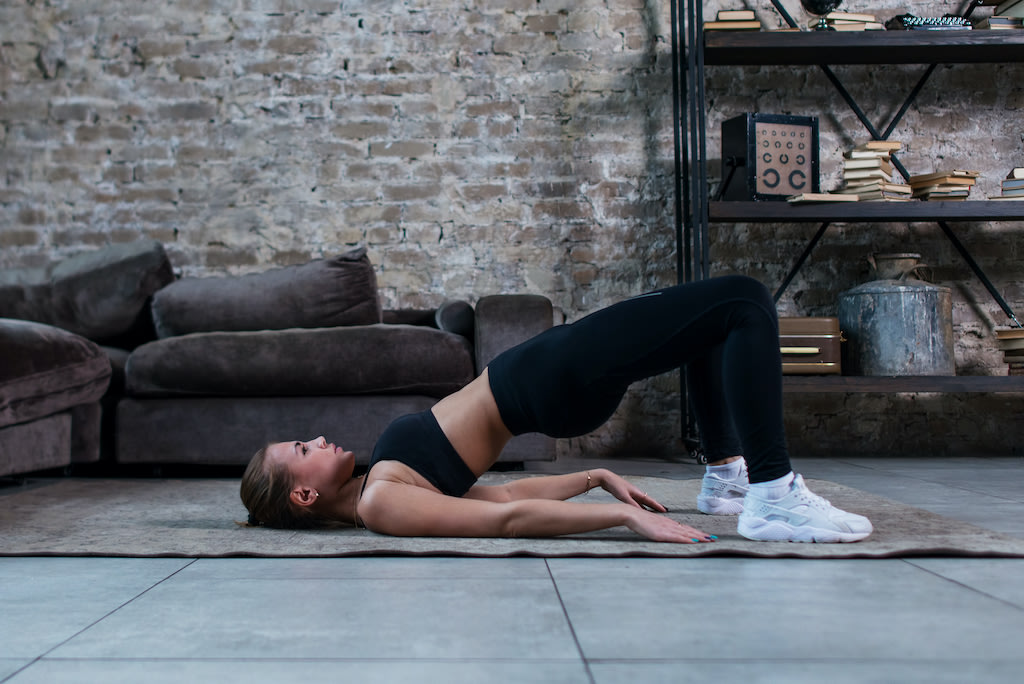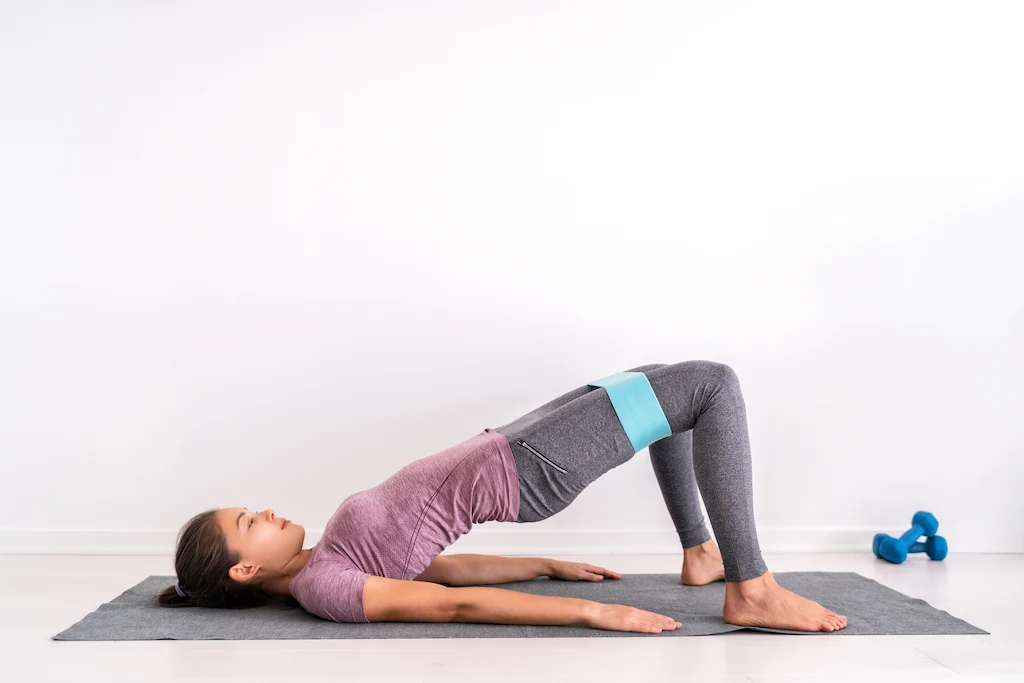Glute Bridge Exercises: Benefits, Variations & How To Do Them

April 10, 2020

For many of us, improving our lower body strength is a big priority. It’s not just about boosting athletic performance in the gym - a stronger lower body makes your daily movements easier, helps to support your body if you spend a lot of time sitting, and means better endurance for activities like walks with friends or running around with your kids.
One of our favourite movements to help build lower body strength, promote glute activation and increase core stability is the glute bridge exercise. An added bonus? Glute bridges are perfect for any fitness level and don’t require any equipment (but there are plenty of ways to dial up the difficulty, too!).
Glute bridges and other glute activation exercises can be done at any time — as part of your warm-up, workout, when you wake up, during your work breaks or at the end of the day.
Find out more about glute bridge exercises, some easy variations and their benefits for the lower body.
Jump to:
40 SECS
How to do a glute bridge
Start by lying flat on your back on a yoga mat. Bend your knees and position your feet firmly on the mat, ensuring that they are hip-width apart and your spine is in a neutral position. Allow your arms to rest by your sides on the mat. This is your starting position.
Press your heels into the mat and raise your pelvis off the floor by squeezing your glutes until your body forms one straight line from chin to knee, resting on your shoulders. Keeping your body in a straight line is key, rather than pushing your hips as high as possible which often results in an arched back, pain or injury.
Inhale. Lower your pelvis to return to the starting position. If you struggle with glute activation, putting a resistance band just above your knees can help.
Repeat.

What muscles do glute bridges work?
Glute bridge exercises are a great way to work your posterior chain - that’s the muscles all down the backside of your body. Performing these exercises isolates and strengthens your gluteus (butt) muscles — the gluteus maximus, medius and minimus — and hamstrings, as well as your quads, hips and core.
Glute bridge benefits
There are so many reasons to love glute bridges! Aside from requiring minimal space and no equipment (making them the perfect addition to an at-home workout or a quick and easy way to warm up your lower body), glute bridges are also low-impact, therefore great for anyone with joint concerns.
Performing glute bridges is an amazing way to strengthen some of the largest muscles in your body such as your glutes and legs (not to mention your core and back), while also helping to improve your hip mobility, posture and core stability.
Strengthening these muscles is so important as you use them every day — we engage them when we’re going for a walk, or bearing the load of groceries, laundry, luggage, kids or pets.

Glute bridge variations
By slightly repositioning your body, you can create a number of different glute-bridge variations, like the elevated or single-leg glute bridge, glute bridge & extension, side bridge and pelvic tilt to bridge, to target different muscle groups.
For an extra challenge, you can add weight in the form of a weight plate or dumbbell resting on your hips, or a resistance band around your knees to activate your glutes more. You can even level up to a barbell hip thrust once you’ve mastered the basics!
To get the most out of these alternative exercises and to prevent injury, it’s important you perfect your technique before adding weight or attempting variations.
Glute bridge and hamstring curl
Begin lying on your back on a yoga mat with your feet resting on top of a fitball and your arms resting by your sides – ensuring that your spine is in a neutral position. This is your starting position.
Think about drawing your belly button towards your spine to engage your core. Push your heels into the fitball to lift your hips until you are resting on your upper back, ensuring that the movement is powered mostly by your glutes rather than your quads or lower back. While keeping your core engaged and hips elevated, bend your knees to roll the fitball in towards you. You should feel tension in your hamstrings as you do this.
Inhale and extend your legs before returning to the starting position.
Repeat.
Glute bridge extension
Begin lying on your back on a yoga mat with your knees bent, your feet hip-width apart on the floor and your arms resting by your sides – ensuring that your spine is in a neutral position. This is your starting position.
Inhale and engage your core by drawing your belly button towards your spine. Exhale as you push your heels into the mat and squeeze your glutes to lift your hips until you are resting on your upper back, creating a straight line from shoulder to knee. While keeping your core engaged and hips elevated and stable, straighten one of your legs. You should feel tension in your glutes and hamstrings as you do this.
Inhale and bend your knee before returning to the starting position.
Repeat.
Build your lower body strength with glute bridges
Although your glutes are a big muscle group, it doesn't mean you need heavy lifting or high-impact exercises to have a good workout. Low-impact exercises like glute bridges are another fantastic way to strengthen your glutes and other muscle groups at the same time.
If you enjoy this type of exercise, Pilates is a low-impact training style that is great for improving your core strength and stability, and Pilates workouts often feature glute bridges. If you enjoy other training styles or sports, try adding glute bridge exercises to your routine as they help to build your overall muscular control and strength, reducing your risk of injury.

A more empowered you starts with Sweat, and our editorial team is here to bring you the latest fitness tips, trainer recommendations, wellbeing news, nutritional advice, nourishing recipes and free workouts.
* Disclaimer: This blog post is not intended to replace the advice of a medical professional. The above information should not be used to diagnose, treat, or prevent any disease or medical condition. Please consult your doctor before making any changes to your diet, sleep methods, daily activity, or fitness routine. Sweat assumes no responsibility for any personal injury or damage sustained by any recommendations, opinions, or advice given in this article.
Fitness